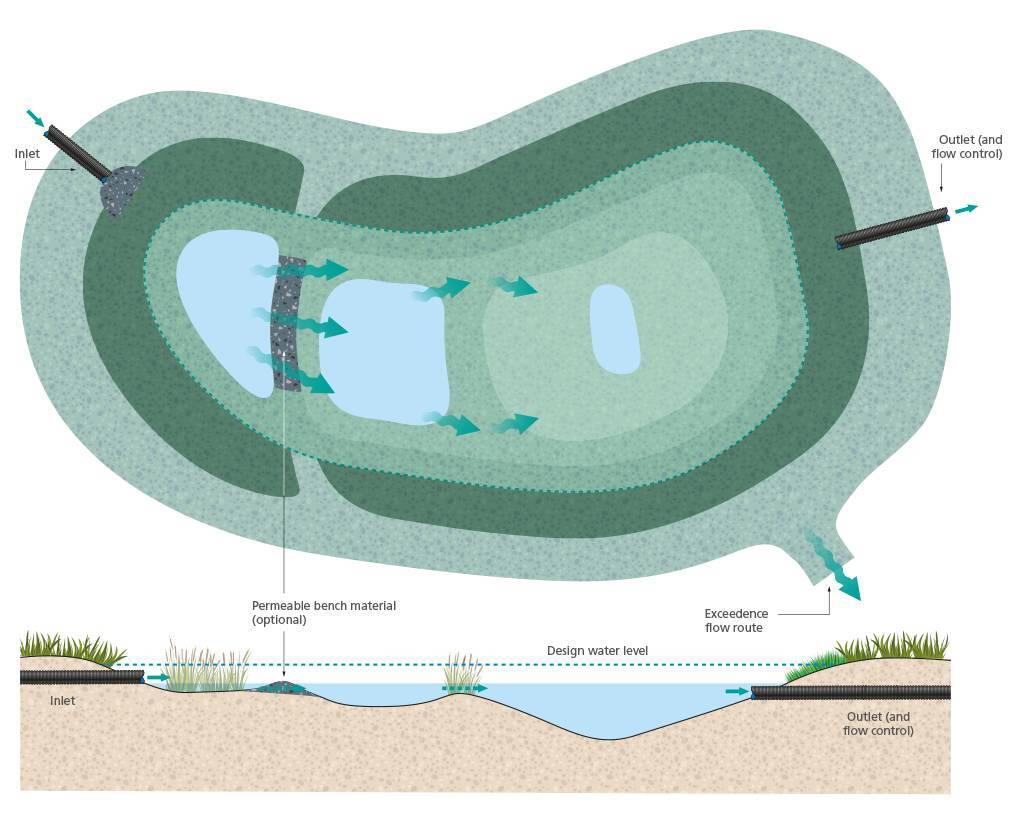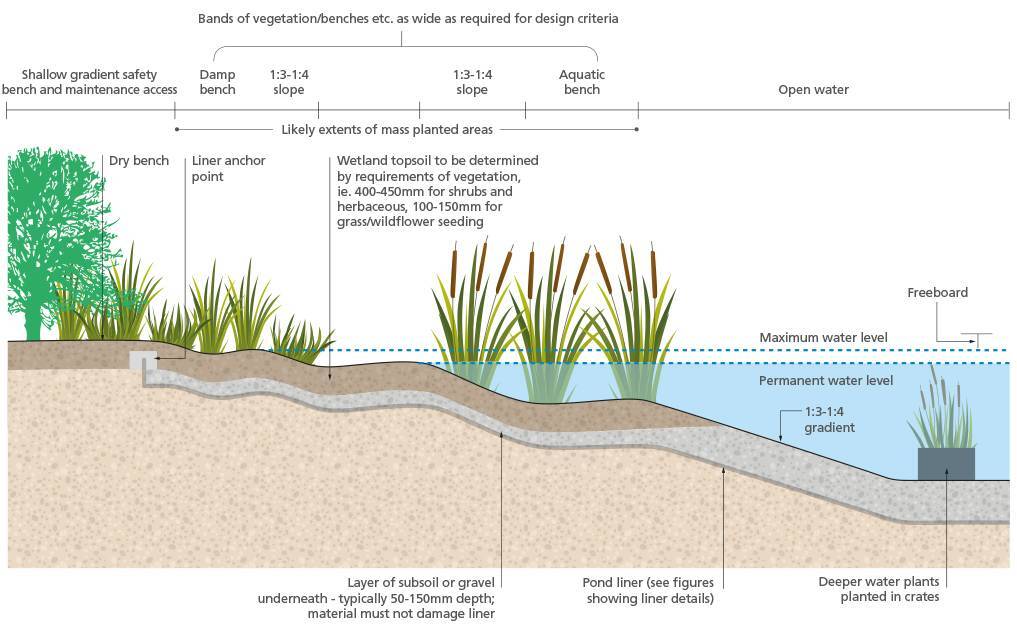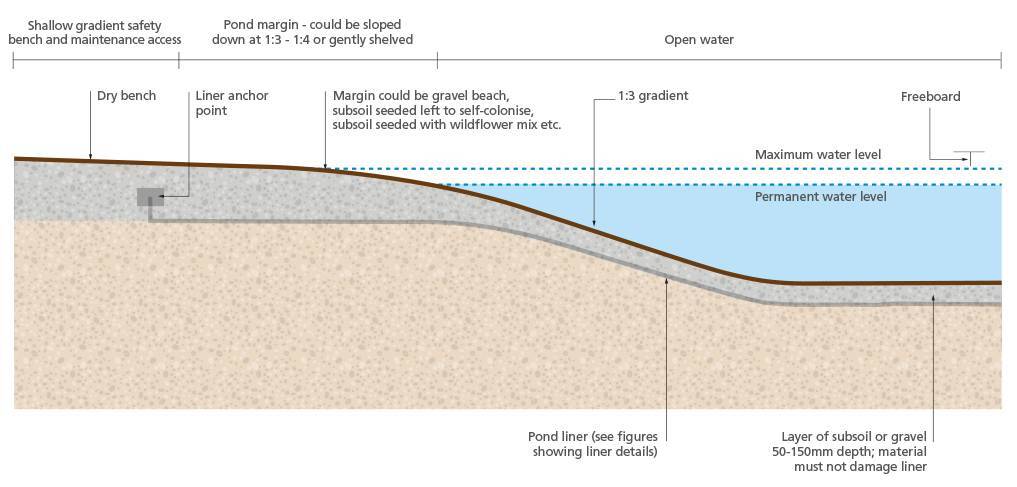Ponds and Wetlands - Technical Information

Unless the pond or wetland system has been designed to allow infiltration around the perimeter of the permanent water pool, ponds and wetlands would typically offer minimal interception.
Provided the system is designed with sufficient storage capacity above the permanent water level, in conjunction with a flow control at the system outlet, ponds or wetlands are able to provide attenuation storage capacity. Although they would not provide a significant contribution to the control of a development’s total discharged water volume.
Where lower levels of treatment efficiency is required (i.e. the pond/wetland forms the downstream element of a SuDS treatment train), smaller permanent water volumes may be considered.

Due consideration should also be given to the suitability of the ground conditions for the impoundment of a permanent water body. The permeability of the soils beneath the system should be assessed to ensure that water levels within the system can be maintained. Where the soils are found to be insufficiently impermeable, the installation of an impermeable geomembrane or lining of impermeable material (i.e. clay) should be used. This approach would also apply to developments within contaminated sites, where the drainage system is required to be completely sealed, to prevent the mobilisation of contaminants.
The position of trees and shrubs adjacent to the pond should also be taken into consideration; situated so that they can offer sufficient shade to reduce the risk of thermal heating of the permanent water, while far enough away to prevent them overhanging the system.


Green infrastructure X


